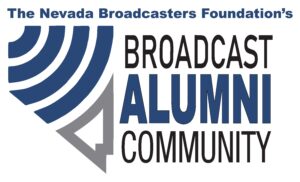
Though school is out for many, the FCC does not take a summer recess. Instead, regulation continues. While the pace of new FCC regulatory issues for broadcasters has slowed, perhaps pending the confirmation of a new Commissioner and the return of the FCC to full strength, there are still regulatory matters in June worth watching. Some are routine, others look more to the future – but all are worth watching just the same.
One of the routine regulatory deadlines comes on June 1, as it is the deadline for Radio and Television Station Employment Units in Arizona, District of Columbia, Idaho, Maryland, Michigan, Nevada, New Mexico, Ohio, Utah, Virginia, West Virginia, and Wyoming with 5 or more full-time employees to upload to their online public inspection file their Annual EEO Public File Report. A station employment unit is a station or cluster of commonly controlled stations serving the same general geographic area having at least one common employee. For employment units with 5 or more full-time employees, the annual report covers hiring and employment outreach activities for the prior year. A link to the uploaded report must also be included on the home page of a station’s website, if it has a website.
For those radio employment units in the District of Columbia, Maryland, Virginia, and West Virginia, the Annual EEO Public File Report brings a new requirement, as this is the mid-point of those stations’ renewal term. As we wrote here, this means that the FCC will conduct its EEO Mid-Term Review of those radio employment units with 11 or more full-time employees. When stations in these states upload their Annual EEO Public File Reports, they must also check a new checkbox in the Settings section of the FCC-hosted public inspection file stating whether or not they have 11 or more full-time employees in their employment unit, so the FCC knows which clusters to review as part of the Mid-Term Review. All other radio groups will need to complete this step as well prior to their Mid-Term Review.
Another EEO deadline falls this month. At the end of April, the FCC’s Enforcement Bureau initiated a new round of random EEO audits of radio and television stations. See our article here for more details on the audit. Licensees that have been randomly selected should review the FCC’s public notice and prepare their response, which must be uploaded to their FCC public inspection file by the FCC-imposed deadline of June 8, 2023.
On other FCC matters, last month, the FCC released a Report and Order and Notice of Proposed Rulemaking regarding the 2023 FCC annual regulatory fees to be paid in September by broadcasters and other FCC-regulated entities. The FCC tentatively concluded that there should be a decrease in the 2023 fees to be paid by broadcasters. For example, the FCC proposes to reduce the per population fee used to set the amount TV stations owe by approximately 11.5% from last year. The FCC also included a more graduated schedule for radio fees, which would further reduce fees on some of the smallest radio stations. For more on the fee proposal and the reason for the decrease, see our recent article on our Blog. Comments on the proposed fees will be due June 14, 2023, with reply comments due June 29, 2023. Expect a final decision on the fees around Labor Day so that the fees can be paid before the October 1 start of the government’s new fiscal year.
June 13 is the deadline for reply comments on the FCC’s Notice of Proposed Rulemaking requesting comment on a variety of proposed rules to implement the Low Power Protection Act (LPPA). The LPPA provides certain low power television stations in small markets with a limited window of opportunity to apply to become Class A television stations with primary status, protecting them from interference from new or improved full-power stations. The FCC is seeking comment on interpreting the eligibility requirements for stations seeking this status. One issue raised in the initial comments was whether the FCC should use Nielsen markets to define which stations would be eligible to apply for Class A status as suggested in the legislation and proposed by the FCC, or use some other market definition.
Also on LPTV, June 12 is the effective date for certain rule changes adopted in a recent FCC Report and Order updating its Part 74 rules for LPTV and TV translator stations, to reflect their termination of analog operations as of July 13, 2021. These rule changes do not materially affect the basic regulatory obligations of LPTV or TV translators now operating with digital facilities. The June 12 effective date does not apply to rules that change paperwork obligations, as these changes must undergo a Paperwork Reduction Act Review and will not become effective until the FCC publishes notice of the Office of Management and Budget’s approval of those changes in a subsequent Federal Register notice. In a recent weekly update, we noted some of the changes adopted in this Order.
In Congress, the House Energy and Commerce Committee has scheduled a June 6 hearing on AM radio to explore the value of AM radio following reports that it might be removed from certain cars. Congress is considering the AM For Every Vehicle Act to mandate that AM be retained in cars (see our article here summarizing the legislation). The June 6 hearing will be streamed. See the link to the meeting here for more details.
The Senate may also be considering the nomination of Anna Gomez for the open seat on the FCC. Some have suggested that the hearing on her nomination could be held in June. See our article here for more on her nomination and the broadcast issues that could be facing a full Commission if she is confirmed.
At the FTC, June 23 is the deadline for comments on the Federal Trade Commission (“FTC”) Notice of Proposed Rulemaking proposing to amend the FTC’s existing Negative Option Rule. That rule addresses “negative options” used in marketing and sales that come in a variety of forms, which each contain a term or condition that allows a seller to interpret a customer’s silence, or failure to take an affirmative action, as acceptance of an offer to sell and charge for goods or services. The FTC is proposing to amend the Negative Option Rule to: (i) expand its scope to all negative marketing options and cover offer made in all media, including Internet, telephone, in-person, and printed material; (ii) require businesses to obtain consumers’ express informed consent before charging them for a good or service they subscribe to; (iii) require businesses to provide a simple cancellation mechanism to immediately halt any recurring charges; and (iv) require businesses to provide an annual reminder to consumers enrolled in negative option plans involving anything other than physical goods.
Looking ahead to July, remember that all full-power stations have an obligation, by July 10, to upload to their online public inspection files their Quarterly Issues Program lists for the second quarter of 2023. The lists should identify the issues of importance to the station’s community and the programs that the station aired in April, May and June that addressed those issues. As you finalize your lists, do so carefully and accurately, as they are these lists are only official records of how your station is serving the public and addressing the needs and interests of its community of license. See our article here for more on the importance of the Quarterly Issues Programs list obligation.
As always, this list of dates is not exhaustive, and deadlines can change. Always review these dates with your legal and technical advisors, and note other dates not listed here that may be relevant to your operations.
Courtesy Broadcast Law Blog


